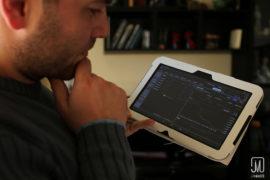
We are currently witnessing a marked shift in the way we handle money. Consumers are now faced with a host of new, increasingly futuristic ways of handling their money and the methods by which they spend it. Consequently, businesses of all shapes and sizes are diversifying their means of accepting payments both online and in brick and mortar stores. A mixture of technological advancements and creative pioneering are changing the face of transactions. Here’s a look through the keyhole at this brave new world, juxtaposed with the most common existing methods.
Tried and Tested
In its current state, the typical modes of payment focus on cash or plastic. Besides the obvious cash element, physical in-store purchases across the USA are processed via credit or debit card, typically using swipe and signature. However, credit cards are catching up by the increased prominence of the EMV chip and pin and contactless cards.
In the online domain, PayPal is ubiquitous and often credited with pioneering online payment. Users are easily able to pay online by connecting their account to a card or bank account. However, its share of online purchases fell to 12 percent in 2014, down 10 percent from the previous year, signaling the emergence of new solutions.
Credit Card-less
For many, credit card security is always a cause for concern, especially online at a time when we are hearing more and more about data snooping from governments, let alone identity thieves. Stemming from this, solutions are arising that eliminate plastic, and even bank account details, from the equation entirely. Paysafecard for example, allows consumers to purchase vouchers with cash from certified outlets, using the code provided to order from any participating online store. Store specific prepaid or gift cards also provide security conscious users with this peace of mind.
Claim up to $26,000 per W2 Employee
- Billions of dollars in funding available
- Funds are available to U.S. Businesses NOW
- This is not a loan. These tax credits do not need to be repaid
The obvious advantage from an online retailer’s perspective is the prepaid element, resulting in a great deal of security for businesses too. Since customer transactions occur in real time, it eschews the need for any chargeback hassle.
Virtual Wallets
Even within a credit card based payment framework, continuing developments are resulting in businesses having to adapt to new ways of accepting payments. Virtual wallets such as Apple Pay are becoming digital replacement for your ‘real’ wallet. Much like PayPal, the idea is to connect your cards to your account, allowing you to both centralize and simplify your ability to make payments online.
The beauty of this of course is that it absolves online retailers of the responsibility of handling the credit card details of their customers. Therefore, what makes virtual wallets so different from the online payment methods we already know?
Going Mobile
The answer lies in POS (Point of Sale) functionality that both Google and Apple, among others, have developed for cell phones. Apple Pay, for example, works in conjunction with their iPhone 6 and 6 Plus models, which feature an NFC chip allowing contactless payments, which are authorized using the fingerprint scanner for additional security. In theory, consumers would no longer even have to carry cash or even cards, so long as the required NFC hardware and functionality is adopted by retailers.
Google recently announced Android Pay which, unlike their previous effort Google Wallet, will come pre-loaded on AT&T, Verizon and T-Mobile Android devices, reaching a huge proportion of smartphone owners in the process. The combined influence of Apple and Google will greatly improve the chances of such widespread support from retailers. Were this to happen, the benefits could be considerable. From a business perspective, the easier and safer it is for customers to pay – the better.
Naturally, technological advancement, and the infrastructure to support it, is never without challenges. Nevertheless, change is afoot.



